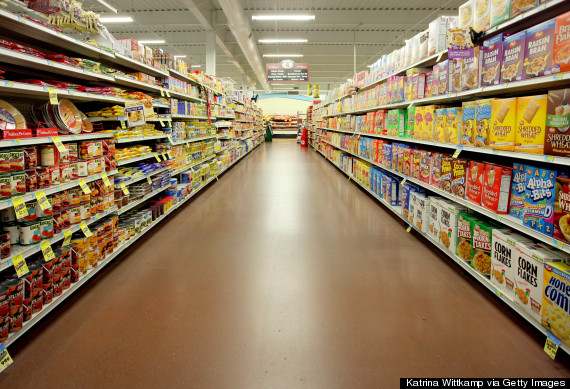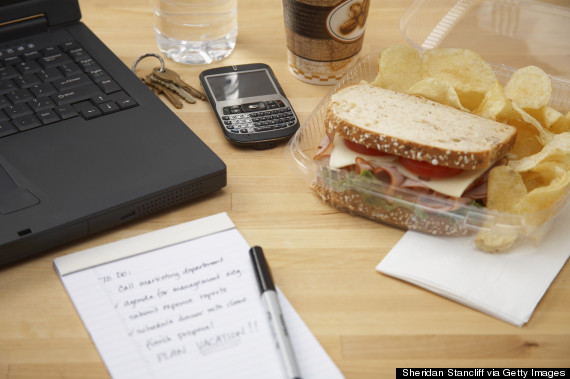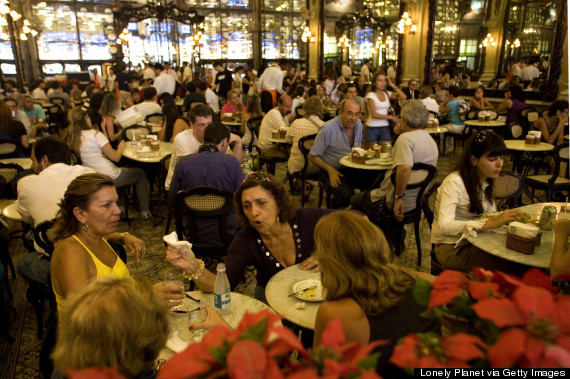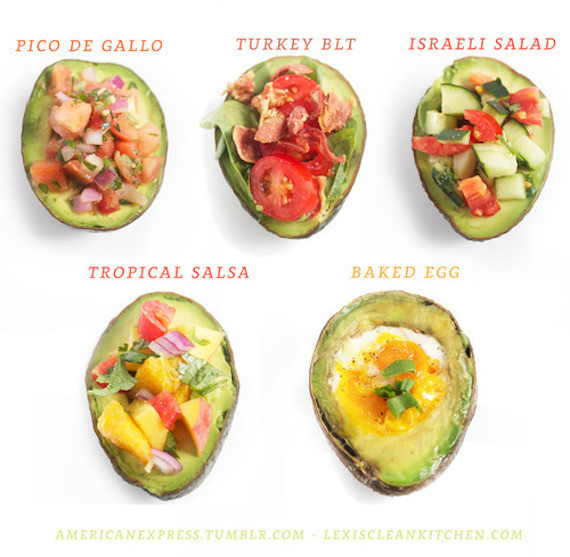
The Pros and Cons of the Paleo Diet
You’ve probably heard about the Paleo diet; maybe you’ve even tried it. The “primal eating” trend is everywhere.
Paleo, of course, encourages us to eat like our ancient ancestors did.
The concept is this: Humans evolved on a diet very different from today’s eating habits.
Therefore, the Paleo proponents argue, to be healthier, leaner, stronger and fitter, we must re-think our diet and remove some of the food groups we consider basic.
Promising everything from fat loss to more energy and clearer skin, Paleo certainly has appeal.
But what is Paleo really? Is it a diet worth trying?
Why “Paleo”: The basic concept of eating primal
To understand Paleo thinking, we’ve got to go back in time. (My DeLorean is parked right outside.)
Let’s have a quick look at what our ancestors ate:
- 60 million years ago: Our oldest cousins, the earliest primates, ate a lot like, well, primates. They subsisted mainly on fruit, leaves, and insects.
- 2.6 million years ago: Evolution at work! Humans started using tools and fire, and moved to a hunter-gatherer diet.
- 10,000 years ago: At this point, “agriculture” had taken the world by storm.
Paleolithic humans definitely got some eating habits right. In general, they consumed:
- three times more produce than the typical American,
- more fiber,
- more protein,
- more omega-3 fatty acids,
- more unsaturated fat,
- more vitamins and minerals,
- and much less saturated fat and sodium.
That said, Paleo fans tend to overlook the fact that hunter-gatherers were not models of pristine health. Paleolithic humans suffered from parasites, infectious diseases, and even atherosclerosis (hardening of the arteries).
The dangers of our modern diet
Fast forward to today. Our diet has changed significantly, and not necessarily for the better. For one thing, it contains far more processed, packaged and commercially-produced foods than ever.
Case in point: The top six calorie sources in the U.S. diet today are:
- grain-based desserts (cake, cookies, etc.),
- yeast breads,
- chicken-based dishes (and you know that doesn’t mean roast chicken),
- sweetened beverages,
- pizza,
- and alcoholic drinks.
Yikes. Not only are these foods not ancestral, some of them could barely be called food.
Meanwhile, obesity, diabetes, and cardiovascular diseases have dramatically increased over the past 50 years.
The Paleo claim that our modern Western diet isn’t healthy rings true. So what should we do to make it better?
According to Paleo: What to eat and what to avoid
Paleo fans suggest we return to the meat and produce-based diet of our past. Specifically, the Paleo dietary model encourages us to base our diets on the following foods:
- animals (especially a “whole animal” approach, including organs, bone marrow, cartilage, and organs),
- animal products (such as eggs or honey),
- vegetables and fruits,
- raw nuts and seeds,
- and added fats (like coconut oil, avocado, butter, ghee).
Notice what’s missing from the list? Paleo tells us to avoid grains (even “whole grains”), heavily processed oils (such as canola and soybean oil), and processed foods in general.
Legumes and dairy are typically off limits too, though some guidelines allow these foods as the Paleo diet continues to “evolve.”
Should you stop eating grains and legumes?
We already know the above list of processed foods and treats aren’t good for us — but what about whole grains and legumes?
Let’s tackle legumes first. Paleo people say we shouldn’t eat legumes because of their high concentration of anti-nutrients like lectins or phytates. Supposedly that reduces their nutritional value to zilch.
Fortunately for bean fans, that’s not true.
Research suggests that the benefits of legumes outweigh their anti-nutrient content. Cooking eliminates most anti-nutrient effects, and some anti-nutrients (like lectins) may even be good for us.
As for grains, Paleo proponents say grains can lead to inflammation and related health problems. This can be true for people with celiac disease (about 1 percent of the population) and for those with non-celiac gluten sensitivity.
But a substantial body of reliable research suggests that eating whole grains improves our health. At the very least, whole grains appear to be neutral when it comes to inflammation.
Bottom line on grains and legumes: Completely eliminating these important foods from our diet is probably a bad idea.
The problem with Paleo
Paleo-style eating has a lot of good qualities: It emphasizes whole foods, lean proteins, vegetables, fruits, and healthy fats. Incorporating more of these foods into your diet would likely be a big improvement.
However, the Paleo diet has some flaws. The evolutionary arguments don’t hold up, and the evidence for excluding dairy, legumes, and grains isn’t strong (yet).
But my biggest concern is this: A one-size-fits-all “best diet” approach doesn’t work.
Strictly following a list of “good” and “bad” or “allowed” and “not allowed” foods is problematic for most people.
Even more, long-term, it’s tough to be consistent on a strict diet regime like Paleo. Sure, most people can follow it for weeks or months. Maybe even years. But decades? That’s unlikely.
Of course, without being consistent, you can’t make progress.
What you can do today
Instead of signing up for a strict lifestyle template, think about small changes you can make in your “modern” life that support what your “ancient” body needs.
For example, look for simple ways incorporate a bit of what’s good about the ancestral lifestyle into your day. Could you:
- Eat a little more fresh food, like adding some fresh fruit or vegetables to dinner tonight?
- Consider replacing a bit of the processed food you might normally be eating? (Not all of it, just some.)
- Get outside for some movement and fresh air?
- Go to bed a little earlier to get a good night’s sleep?
These small actions — done consistently — can do much more for your health and happiness long-term. And consistency is more important than any food list or evolutionary theory.
—
Want some help finding the best diet for you? Download this free guide: Paleo, vegan, intermittent fasting…Here’s how to choose the best diet for you.
—
About the author
John Berardi, Ph.D. is a founder of Precision Nutrition, the world’s largest online nutrition coaching company. He also sits on the health and performance advisory boards of Nike, Titleist and Equinox.
Dr. Berardi was recently selected as one of the 20 smartest coaches in the world by livestrong.com, the internet’s most popular fitness site.
In the last five years, Dr. Berardi and his team have personally helped over 30,000 people improve their eating, lose weight, and boost their health through their renowned Precision Nutrition Coaching program.
References
Almeida CC, et al. Beneficial effects of long-term consumption of a probiotic combination of Lactobacillus casei Shirota and Bifidobacterium breve Yakult may persist after suspension of therapy in lactose-intolerant patients. Nutr Clin Pract. 2012 Apr;27(2):247-51.
Anderson A, et al. Whole-grain foods do not affect insulin sensitivity or markers of lipid peroxidation and inflammation in healthy, moderately overweight subjects. J Nutr. 2007;137(6):1401-1407.
Aune D, et al. Dietary fibre, whole grains, and risk of colorectal cancer: systematic review and dose-reponse meta-analysis of prospective studies. BMJ. 2011;343:d6617.
Bouchenak, Malika, and MyriemLamri-Senhadji. 2013. Nutritional Quality of Legumes, and Their Role in Cardiometabolic Risk Prevention: A Review. Journal of Medicinal Food 16(3): 185-198.
Caminero A, et al. Diversity of the cultivable human gut microbiome involved in gluten metabolism: isolation of microorganisms with potential interest for coeliac disease. FEMS Microbiol Ecol. 2014 May;88(2):309-19.
Campos-Vega, Rocio, Guadalupe Loarca-Piña, and B. Dave Oomah. 2010. Minor Components of Pulses and Their Potential Impact on Human Health. Food Research International 43(2): 461-482.
Carmody, Rachel N., and Richard W. Wrangham. 2009. The Energetic Significance of Cooking. Journal of Human Evolution 57(4): 379-391.
Carrera-Bastos P, et al. The western diet and lifestyle and diseases of civilization. Research Reports in Clinical Cardiology. 2001;2:15-35.
Cerling TE, et al. Diet of Theropithecus from 4 to 1 Ma in Kenya. Proc Natl Acad Sci U S A. vol. 110, issue 26, pp. 10507-10512
Cerling TE, et al. Stable isotope-based diet reconstructions of Turkana Basin hominins. Proc Natl Acad Sci U S A. 2013 Jun 25;110(26):10501-6.
Cochran G, and Harpending H. The 10,000 Year Explosion: How Civilization Accelerated Human Evolution. (Basic Books: 2009).
Cordain L, et al. 2005. Origins and Evolution of the Western Diet: Health Implications for the 21st Century. The American Journal of Clinical Nutrition 81(2): 341-354.
Cordain L. 2011. The Paleo Diet Lose Weight and Get Healthy by Eating the Foods You Were Designed to Eat. Rev. ed. Hoboken, N.J: Wiley.
Dahl WJ, et al. Review of the health benefits of peas (Pisum sativum L.). Br J Nutr. 2012;108 Suppl 1:S3-10.
David LA, et al. Diet rapidly and reproducibly alters the human gut microbiome. Nature 505, 559-563 (23 January 2014)
Eaton SB, and Konner M. 1985. Paleolithic Nutrition. A Consideration of Its Nature and Current Implications. The New England Journal of Medicine 312(5): 283-289.
Eaton SB, and Konner MJ. 1997. Paleolithic Nutrition Revisited: a Twelve-year Retrospective on Its Nature and Implications. European Journal of Clinical Nutrition 51(4): 207-216.
Eaton SB. 2006. The Ancestral Human Diet: What Was It and Should It Be a Paradigm for Contemporary Nutrition? Proceedings of the Nutrition Society 65(01): 1-6.
Eiberg H, et al. Blue eye color in humans may be caused by a perfectly associated founder mutation in a regulatory element located within the HERC2 gene inhibiting OCA2 expression. Human Genetics. March 2008;123(2):177-187
Flight I, Clifton P. Cereal grains and legumes in the prevention of coronary heart disease and stroke: a review of the literature. Eur J Clin Nutr. 2006;60(10):1145-1149.
Frassetto LA, et al. Metabolic and physiologic improvements from consuming a Paleolithic, hunter-gatherer type diet. Eur J Clin Nutr. 2009;63(8):947-955.
Frost GS, et al. Impacts of Plant-Based Foods in Ancestral Hominin Diets on the Metabolism and Function of Gut Microbiota In Vitro. mBio. 2014;5(3). pii: e00853-14.
Fujimura KE, et al. Role of the gut microbiota in defining human health. Expert Rev Anti Infect Ther. 2010 Apr;8(4):435-54.
He T, et al. Effects of yogurt and bifidobacteria supplementation on the colonic microbiota in lactose-intolerant subjects. J Appl Microbiol. 2008 Feb;104(2):595-604.
Henry AG, Brooks AS, and Piperno DR. 2011. Microfossils in Calculus Demonstrate Consumption of Plants and Cooked Foods in Neanderthal Diets (Shanidar III, Iraq; Spy I and II, Belgium). Proceedings of the National Academy of Sciences 108(2).
Hollo E. Evolutionary Genetics: Genetics of lactase persistence – fresh lessons in the history of milk drinking. European Journal of Human Genetics (2005) 13, 267-269, 486-491.
Human Microbiome Project Consortium. Structure, function and diversity of the healthy human microbiome. Nature 486, 207-214 (14 June 2012).
Jang Y, et al. Consumption of whole grain and legume powder reduces insulin demand, lipid peroxidation, and plasma homocysteine concentrations in patients with coronary artery disease: randomized controlled clinical trial. Arterioscler Thromb Vasc Biol. 2001;21(12):2065-2071.
Jensen MK, et al. Whole grains, bran, and germ in relation to homocysteine and markers of glycemic control, lipids, and inflammation. Am J Clin Nutr. 2006;83(2):275-283.
Jones M. Moving North: Archaeobotanical Evidence for Plant Diet in Middle and Upper Paleolithic Europe. The Evolution of Hominin Diets. Vertebrate Paleobiology and Paleoanthropology. 2009. Pp. 171-180.
Jönsson T, et al. Beneficial effects of a Paleolithic diet on cardiovascular risk factors in type 2 diabetes: a randomized cross-over pilot study. Cardiovasc Diabetol. 8, 35 (2009).
Jonsson T, et al. A Paleolithic diet is more satiating per calorie than a Mediterranean-like diet in individuals with ischemic heart disease. Nutr Metab (Lond). 2010;7:85.
Jukanti AK, et al. Nutritional quality and health benefits of chickpea (Cicer arientum L.): a review. Br J Nutr. 2012;108 Suppl 1:S11-16.
Kelly SA, et al. Wholegrain cereals for coronary heart disease. Cochrane Database Syst Rev. 2007;(2):CD005051.
Lev E, Kislev ME, and Bar-Yosef O. 2005. Mousterian Vegetal Food in Kebara Cave, Mt. Carmel. Journal of Archaeological Science 32(3): 475- 484.
Lindeberg S, and Lundh B. Apparent absence of stroke and ischaemic heart disease in a traditional Melanesian island: a clinical study in Kitava. J Internal Med. 233, 269-275 (1993).
Lindeberg S, et al. A Palaeolithic diet improves glucose tolerance more than a Mediterranean-like diet in individuals with ischaemic heart disease. Diabetologia 50, 1795-1807 (2007).
Lindeberg S. 2005. Palaeolithic Diet (“stone Age” Diet). Food & Nutrition Research 49(2): 75-77.
Lindeberg S. Modern Human Physiology with Respect to Evolutionary Adaptations That Relate to Diet in the Past. The Evolution of Hominin Diets. Vertebrate Paleobiology and Paleoanthropology. 2009. Pp. 43-57.
Lindeberg S. Food and Western Disease: Health and nutrition from an evolutionary perspective. (Wiley-Blackwell: 2010).
Mercader J. Mozambican grass seed consumption during the Middle Stone Age. Science. 2009 Dec 18;326(5960):1680-183.
Mummert A, et al. Stature and robusticity during the agricultural transition: Evidence from the bioarchaeological record. Economics & Human Biology. 2011;9(3): 284-301.
O’Keefe Jr JH, and Cordain L. 2004. Cardiovascular Disease Resulting From a Diet and Lifestyle at Odds With Our Paleolithic Genome: How to Become a 21st-Century Hunter-Gatherer. Mayo Clinic Proceedings 79(1): 101-108.
Prasad C. 2000. Improving Mental Health through Nutrition: The Future. Nutritional Neuroscience 4(4): 251- 272.
Revedin A, et al. Thirty thousand-year-old evidence of plant food processing. Proc Natl Acad Sci USA. 2010 Nov 2;107(44):18815-18819.
Roy F, Boye JI, and Simpson BK. 2010. Bioactive Proteins and Peptides in Pulse Crops: Pea, Chickpea and Lentil. Food Research International 43(2): 432-442.
Savard M, et al. 2006. The Role of Wild Grasses in Subsistence and Sedentism: New Evidence from the Northern Fertile Crescent. World Archaeology 38(2): 179-196.
Scott KP, et al. The influence of diet on the gut microbiota. Pharmacological Research Volume 69, Issue 1, March 2013, Pages 52-60.
Sponheimer M, et al. Isotopic evidence of early hominin diets. Proc Natl Acad Sci U S A. June 25, 2013; 110(26): 10513-10518.
Thompson RC, et al. Atherosclerosis across 4000 years of human history: the Horus study of four ancient populations. Lancet. 2013 Apr 6;381(9873):1211-22.
Ungar PS, et al. 2006. Diet in Early Homo: A Review of the Evidence and a New Model of Adaptive Versatility. Annual Review of Anthropology 35(1): 209-228.
Venn BJ, Mann JI. Cereal grains, legumes and diabetes. Eur J Clin Nutr. 2004;58(11):1443-14461.
Wynn JG, et al. Diet of Australopithecus afarensis from the Pliocene Hadar Formation, Ethiopia. Proc Natl Acad Sci U S A. Jun 25, 2013; 110(26): 10495-10500.
Zamakhchari M, et al. Identification of Rothia bacteria as gluten-degrading natural colonizers of the upper gastro-intestinal tract. PLoS One. 2011;6(9):e24455.
Zhong Y, et al. [Effect of probiotics and yogurt on colonic microflora in subjects with lactose intolerance]. Wei Sheng Yan Jiu. 2006 Sep;35(5):587-91.
Zoetendal EG, et al. The human small intestinal microbiota is driven by rapid uptake and conversion of simple carbohydrates. The ISME Journal (2012) 6, 1415-1426.







